This Is My Zelda/Link
This is my Zelda/Link
A Legend of Zelda fan comic I made with a twist 🏳️⚧️ Happy pride month! (No TOTK spoilers)

More Posts from Dabriaanderlaine and Others
19 points
Writer Bingo
What’s your final score? 👀

“Why should rich people pay more” because fuck ‘em
“So you are okay for paying more when you have money” I am not excluded from ‘fuck ‘em’ when relevant
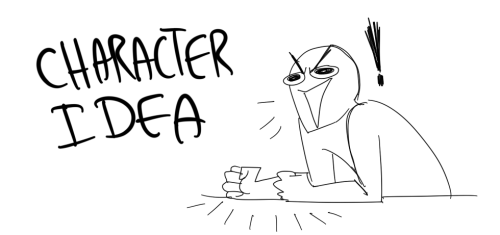
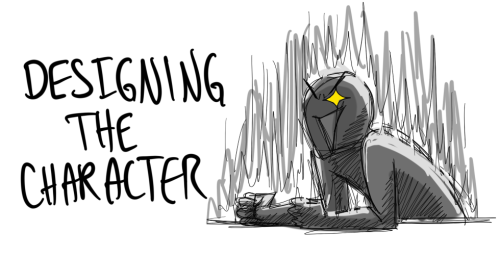
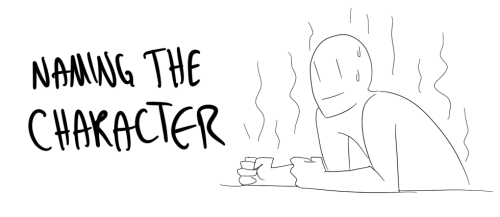
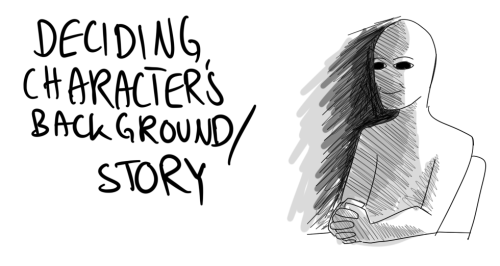
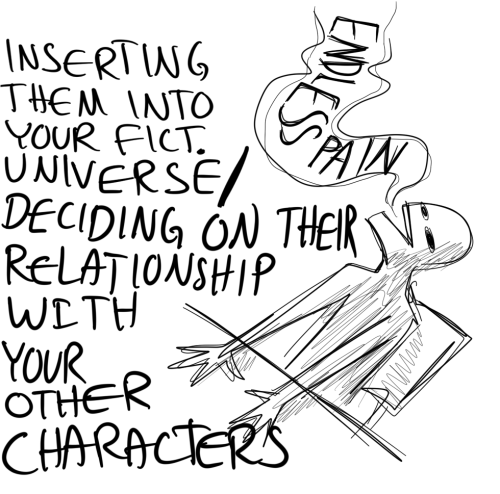
the suffering never ends
How to avoid White Room Syndrome
by Writerthreads on Instagram
A common problem writers face is "white room syndrome"—when scenes feel like they’re happening in an empty white room. To avoid this, it's important to describe settings in a way that makes them feel real and alive, without overloading readers with too much detail. Here are a few tips below to help!
Focus on a few key details
You don’t need to describe everything in the scene—just pick a couple of specific, memorable details to bring the setting to life. Maybe it’s the creaky floorboards in an old house, the musty smell of a forgotten attic, or the soft hum of a refrigerator in a small kitchen. These little details help anchor the scene and give readers something to picture, without dragging the action with heaps of descriptions.
Engage the senses
Instead of just focusing on what characters can see, try to incorporate all five senses—what do they hear, smell, feel, or even taste? Describe the smell of fresh bread from a nearby bakery, or the damp chill of a foggy morning. This adds a lot of depth and make the location feel more real and imaginable.
Mix descriptions with actions
Have characters interact with the environment. How do your characters move through the space? Are they brushing their hands over a dusty bookshelf, shuffling through fallen leaves, or squeezing through a crowded subway car? Instead of dumping a paragraph of description, mix it in with the action or dialogue.
Use the setting to reflect a mood or theme
Sometimes, the setting can do more than just provide a backdrop—it can reinforce the mood of a scene or even reflect a theme in the story. A stormy night might enhance tension, while a warm, sunny day might highlight a moment of peace. The environment can add an extra layer to what’s happening symbolically.
Here's an example of writing a description that hopefully feels alive and realistic, without dragging the action:
The bookstore was tucked between two brick buildings, its faded sign creaking with every gust of wind. Inside, the air was thick with the scent of worn paper and dust, mingling with the faint aroma of freshly brewed coffee from a corner café down the street. The wooden floorboards groaned as Ella wandered between the shelves, her fingertips brushing the spines of forgotten novels. Somewhere in the back, the soft sound of jazz crackled from an ancient radio.
Hope these tips help in your writing!
You would think that the God of Death has no respect for life. However, nothing could be farther from the truth. In fact, out of all the gods, it is the God of Death who has the most respect for life, for all too often have they been forced to watch mortals throw their lives away.
How to keep making ttrpgs? I just made my first one+ a couple game jam entries and i feel like i hit a rock , all i have is a vague idea, what do i do?
aw well i'm so happy you made a bunch of games and want to keep making them!
there are multiple answers to this, but mine is: take a break! i had on-and-off ttrpg burnout last year, and forcing it never helps. so i used that burnout time to get into a new hobby i've been meaning to try for forever: fighting games! now i go back and forth between writing my games and getting better at guilty gear! i'm even trying to learn a new type of controller?? it's real fun. on top of that, seeing other types of game formats is a great way to get new ideas!
and some days i just chill with my partner and my pet reptiles. REST is so important. not as a way to work more in the future, but just for its own sake.
the ttrpg design flow will be back soon enough. after HEXFALL and Caltrop Core, i was like 'idk what other kind of games i wanna make. have i done everything i can do here?' but sure enough, i got the idea for EMERGE8, an entirely new SRD, then got the idea for TANK!, Decadent Salvo, and more.
tl;dr don't force it. take a break and your brain will be itching to give you fresh new ideas soon enough!
Yusuf ibn Ibrahim ibn Muhammad Al-Kaysani,
Proud Citizen of the Zirid Dynasty: Part 2
Ok, so now we can confidently say that the Zirid Dynasty makes sense as the homeland of Yusuf. I was going to get straight into the history of the Zirid Dynasty but honestly, there's nothing straight about this blog. I wrote one line about the city of Kairouan being founded by the Umayyad's on the site of a former Byzantine outpost and came to the conclusion that some more context couldn't hurt. Let's zoom back out for a minute and get a feel for some of the regions historic context, it's relationship with "Italy", and also get some context for "the Franks" feeling of entitlement towards the Levant.
Keep your eye on the city of Carthage as we go, that's modern day Tunis. Phoenicians founded the city in 814 BC and it became the centre of the Carthaginian Empire. Carthage was the trading hub of the Ancient Mediterranean and was an incredibly rich city.

This is probably where a textbook would start, ignoring the Amazigh peoples that inhabited the region for at least 9,000 years before the Phoenicians sailed up the coast. We'll come back to that another day. For now, have a look at Phoenicia itself on the map. Doesn't that region look familiar? People sailing around the Mediterranean and claiming other parts of it was nothing new in 1096 AD.

The rise of the Carthaginian Empire and the rise of the Roman Empire brought them into conflict. This lead to the Maghrebi region of the Carthaginian Empire becoming the Roman province, Africa Proconsularis.*

*This link is not objective and contains blatant historical bias but it was the most accurate, least biased one I could find.

In the 4th century Christianity began to spread throughout the Roman Empire after Constantine I co-signed the Edict of Milan. He was the first Christian Roman Emperor, and he founded the new Roman capital city, Constantinople (now Istanbul not Constantinople).

Christianisation was messy and complicated. There was a rich diversity of indigenous religious beliefs throughout the regions beforehand, despite the uniform picture painted by the term "pagan", and the early adoption of Christianity was varied in its sincerity. But that's a whole other story. It seemed relevant to note that it's rarely ever as simple as "us" and "them".

After the fall of the Roman Empire in the 5th century, Africa Proconsularis became the Kingdom of the Vandals. Note that the Eastern Roman Empire (the Byzantine Empire) was still going strong. The fall marked the beginning of the Middle Ages, also known as the "the Dark Ages".

The Kingdom of the Vandals was conquered by the Byzantine Empire in the 6th century, when it became the Exarchate of Africa. The Byzantines held it until the Muslim conquest of the Maghreb in the 7th century. (Why yes indeed, those are both just links to Wikipedia. The other articles I could find were all a mess. The wiki entries at least acknowledge the existence of the regions indigenous peoples and both entries have referenced sources.)

As the Byzantine Empire expands and contracts during the Middle Ages you can see that it extends as far west as Carthage and southern Spain in the 6th century, that it includes Anatolia and the Levant in the 5th and 6th centuries, and that it recovered a portion of Anatolia and the Levant in the 12th century following the First Crusade.

In the 7th century Islam spread throughout the Arab peninsula, (the prophet Muhammad lived from 571-632 AD). Over the course of the next few hundred years Islam spread from the Arabian peninsula as far west as the Iberian peninsula and as far east as northern India.

By the late 7th century "Tunisia" was part of the Umayyad Caliphate. The caliphate mostly kept existing governments and cultures intact and administered through governors and financial officers in order to collect taxes. Arabic became the main administrative language. Non-Muslim subjects paid a special tax. Although many Christians migrated out of the region following the Muslim conquest there was a sizeable Christian community up until possibly as late as the 14th century.
And here we are, we've reached the 10 image per post limit so we'll finish working our way up to the 11th century next time!
Hopefully, dear reader, this gives you a slightly richer sense of the First Crusades historic context, some sense of "Tunisia's" historic cultural influences, and a sense of "Tunisia's" significance within the wider Mediterranean world.
maps: 1, 2, 3, 4
Proud Citizen of the Zirid Dynasty: Part 1
The Emotion Thesaurus: Agitation
Hi everyone and happy Wednesday! Post Two of new series!
This section comes from The Emotional Thesaurus by Ackerman and Puglisi.
Definition: feeling upset or disturbed, a state of unrest
Physical Signs:
reddening of the face
a sheen of sweat on the cheeks, chin, and forehead
hands moving in jerks
rubbing back of the neck
patting pockets or digging in the purse, looking for something lost
clumsiness due to rushing (knocking things over, bumping tables)
a gaze that bounces from place to place
an inability to stay still
jamming or cramming things away without care
abrupt movement (causing a chair to tip or scuff the floor loudly)
flapping hands
becoming accident prone (bashing one's hip on a desk corner)
dragging hands through hair repeatedly
forgetting words, being unable to articulate thoughts
backtracking to try and undo something said in haste
adjusting one's clothing
avoiding eye contact
a wavering voice
not knowing where to look or go
guarding one's personal space
taking too long to answer a question or response
throat clearing
overusing ums, ahs, and other verbal hesitations
turning away from others
a bobbing Adam's apple
pacing
making odd noises in throat
rapid lip movement as one tries to find the right things to say
flinching if touched
minimizing another's compliments
fanning self
unbuttoning a top shirt
tugging at a tie, collar, or scarf
Internal Sensations:
excessive saliva
feeling overheated
stiffening air on the nape of the neck
light-headedness
short, fast breaths
sweating
tingling skin as sweat forms
Mental Responses:
mounting frustration that causes thoughts to blank
compounding mistakes
a tendency to lie to cover up or excuse
anger at oneself for freezing up
trying to pinpoint the source of discomfort
mentally ordering oneself to calm down, relax
Cues of Acute or Long-Term Agitation:
flight response (looking for an escape of fleeing room)
snapping at others, or adopting a defensive tone
scattering papers and files in a frantic search
May Escalate To :
Annoyance
Frustration
Anxiety
Anger
Cues of Suppressed Agitation:
changing the subject
making excuses
joking to lighten the mood
staying busy with tasks to avoid dealing with the source of emotion
shifting attention to others, putting them in the spotlight
Like, follow and reblog for more!
wishing all artists a very sincere "get weirder with it" this coming year
Creepy things to add to settings
Just to make things a bit more interesting
—Water stains from flooding
—Withered down machinery resulting from weather
—Torn fabric caught on spikes
—Attempting to find a hiding spot, only to turn around and find the skeleton of the last person who tried to hide there
—Expecting to see spiders and other bugs, only for them all to scurry away as a new presence enters the room
—Fog slithering in through holes in the walls or open windows
—Stepping on the dead, crunchy leaves of plants that started growing inside
—The characters knowing the floorboards will creak, so they try really hard to keep quiet as they travel. Make them all freeze when they hear something else coming at them and decide if they should stand still to keep from attracting any more attention or if they run for their lives
—The wallpaper and paintings on the wall torn off and scattered against the floor, leaving the walls barren and lifeless
it’s all about how you describe it! Find things that get under people’s skin (bugs, snakes, certain sounds, etc) and connect them to whatever you’re trying to make creepy
-
 praying-man-tits reblogged this · 2 weeks ago
praying-man-tits reblogged this · 2 weeks ago -
 praying-man-tits liked this · 2 weeks ago
praying-man-tits liked this · 2 weeks ago -
 sagaciouscejai reblogged this · 2 weeks ago
sagaciouscejai reblogged this · 2 weeks ago -
 sagaciouscejai liked this · 2 weeks ago
sagaciouscejai liked this · 2 weeks ago -
 angelic-anissa reblogged this · 2 weeks ago
angelic-anissa reblogged this · 2 weeks ago -
 angelic-anissa liked this · 2 weeks ago
angelic-anissa liked this · 2 weeks ago -
 ultragirl2077 liked this · 2 weeks ago
ultragirl2077 liked this · 2 weeks ago -
 bothsloth reblogged this · 2 weeks ago
bothsloth reblogged this · 2 weeks ago -
 jakalor liked this · 2 weeks ago
jakalor liked this · 2 weeks ago -
 seafoamseen liked this · 2 weeks ago
seafoamseen liked this · 2 weeks ago -
 jkemotcore reblogged this · 2 weeks ago
jkemotcore reblogged this · 2 weeks ago -
 jkemotcore liked this · 2 weeks ago
jkemotcore liked this · 2 weeks ago -
 sevencoursemeal liked this · 2 weeks ago
sevencoursemeal liked this · 2 weeks ago -
 taln-hyena reblogged this · 3 weeks ago
taln-hyena reblogged this · 3 weeks ago -
 taln-hyena liked this · 3 weeks ago
taln-hyena liked this · 3 weeks ago -
 sadgothtransbian liked this · 3 weeks ago
sadgothtransbian liked this · 3 weeks ago -
 rocketdrifter reblogged this · 3 weeks ago
rocketdrifter reblogged this · 3 weeks ago -
 rocketdrifter liked this · 3 weeks ago
rocketdrifter liked this · 3 weeks ago -
 snoringthroughtheday liked this · 3 weeks ago
snoringthroughtheday liked this · 3 weeks ago -
 wherethestoryhasimagination liked this · 3 weeks ago
wherethestoryhasimagination liked this · 3 weeks ago -
 softbutchthatlovesyou liked this · 3 weeks ago
softbutchthatlovesyou liked this · 3 weeks ago -
 viictiel liked this · 3 weeks ago
viictiel liked this · 3 weeks ago -
 daemonophobic liked this · 3 weeks ago
daemonophobic liked this · 3 weeks ago -
 petra1x1 liked this · 3 weeks ago
petra1x1 liked this · 3 weeks ago -
 g1nger-bread liked this · 3 weeks ago
g1nger-bread liked this · 3 weeks ago -
 sporehead liked this · 3 weeks ago
sporehead liked this · 3 weeks ago -
 daschantal05 reblogged this · 3 weeks ago
daschantal05 reblogged this · 3 weeks ago -
 daschantal05 liked this · 3 weeks ago
daschantal05 liked this · 3 weeks ago -
 papac20x6 liked this · 3 weeks ago
papac20x6 liked this · 3 weeks ago -
 darthwoodrack liked this · 3 weeks ago
darthwoodrack liked this · 3 weeks ago -
 knownoname liked this · 3 weeks ago
knownoname liked this · 3 weeks ago -
 atomicwinnertaco liked this · 3 weeks ago
atomicwinnertaco liked this · 3 weeks ago -
 pixelated-perfectionist liked this · 3 weeks ago
pixelated-perfectionist liked this · 3 weeks ago -
 longlostmuffin liked this · 4 weeks ago
longlostmuffin liked this · 4 weeks ago -
 thetruelesbianwhisperer liked this · 1 month ago
thetruelesbianwhisperer liked this · 1 month ago -
 ectoplasmicsappho liked this · 1 month ago
ectoplasmicsappho liked this · 1 month ago -
 purplenidoqueen liked this · 1 month ago
purplenidoqueen liked this · 1 month ago -
 hyrtwynwrites liked this · 1 month ago
hyrtwynwrites liked this · 1 month ago -
 anselrainier liked this · 1 month ago
anselrainier liked this · 1 month ago -
 kayjime liked this · 1 month ago
kayjime liked this · 1 month ago -
 dodojavelpelo liked this · 1 month ago
dodojavelpelo liked this · 1 month ago -
 pyrobelle liked this · 1 month ago
pyrobelle liked this · 1 month ago -
 bluebird-in-love liked this · 1 month ago
bluebird-in-love liked this · 1 month ago -
 scendde liked this · 1 month ago
scendde liked this · 1 month ago -
 sodaslittleplace liked this · 1 month ago
sodaslittleplace liked this · 1 month ago -
 jazz-1236 reblogged this · 1 month ago
jazz-1236 reblogged this · 1 month ago -
 jazz-1236 liked this · 1 month ago
jazz-1236 liked this · 1 month ago -
 cryptid-corvids liked this · 1 month ago
cryptid-corvids liked this · 1 month ago
